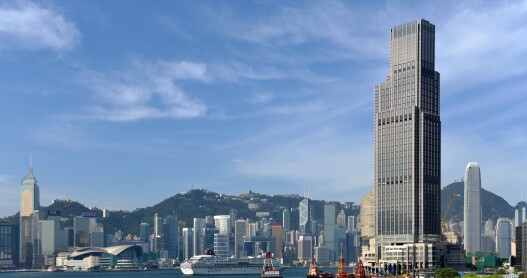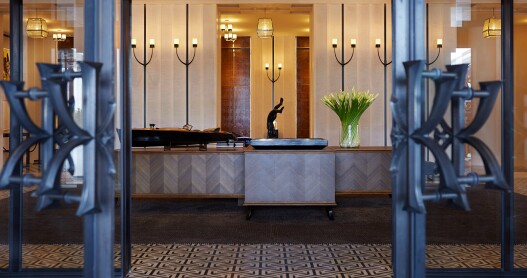Overview
When’s the best time to go to Hong Kong?
Hong Kong weather ranges from cool climes to tropical heat, depending on the time of year. The months of September through December are pleasant and temperate. The best time to visit is October, with its amazing festivals and perfect island weather. Bring a jacket when visiting between December and February. March begins to warm up, and from June to August the rising temperatures and humidity makes it the warmest and stickiest months of the year. Summer is typhoon season. Always carry an umbrella to fight the rain and/or sunshine.
How to get around Hong Kong
Flying is the most common way to arrive in this exhilarating city. Touted as one of the world’s best airports, Chek Lap Kok is home to Cathay Pacific airways and subsidiary Dragon Air. This busy airport is a shopping destination and a global hub, offering numerous stores and eateries. From the airport, the most pleasant surprise is the efficiency of travel options into town. A weary traveler can spend a few hundred Hong Kong dollars on a taxi, or hop aboard the Airport Express—where a cool HK$90 takes you to Kowloon Station, or HK$100 takes you into the Hong Kong Station in Central in just 24 minutes. You can also conveniently check-in and drop off your luggage at these stations for your next flight. A harbor city, Hong Kong and its surrounding islands are all accessible by high-speed ferries. Hong Kong Island connects with Kowloon, the port to the north, via the famed Star Ferry. The ride takes just minutes and is a great way to view Victoria Harbour. The ferry goes between Tsim Sha Tsui port in Kowloon to Wanchai or Central piers on the island side.
Hong Kong boasts one of the world’s most convenient and self-explanatory transit systems, the MTR (Mass Transit Rail), which is clean, efficient, and comprehensive. Transportation around the city is easy and cheap, whether via MTR, taxi, bus, minibus, ferry, tram, or walking. When traveling by taxi, have the destination name written in Chinese, as well as the cross streets, for the cabbie. It’s also helpful to carry cash, including small bills, for cab fare. If you are going from Hong Kong Island to Kowloon (or vice versa), look for specific “cross harbour” taxis with a “Not in Service” sign flipped on their dashboard to signify that they go across the harbor. Signal them with a horizontal wave. An Octopus card provides instant electronic access to Hong Kong’s public transit system for the MTR, buses, minibuses, trams, and Airport Express trains. A smart debit card, it can be tapped onto a reader to deduct fare. Bonus: You can also use your Octopus card to pay for your purchases at most major convenience stores and grocery shops.
Can’t miss things to do in Hong Kong
Hike up to the peak with a picnic in tow, and take in the spectacular scenery and breathtaking views of the harbor, the landscapes of the New Territories, and the urban jungle of skyscrapers.
Food and drink to try in Hong Kong
Hong Kong offers a wonderful diversity of Asian delicacies, from its famous Hong Kong milk tea and sweetened cold lemon tea to Chinese classics such as fish ball noodle soup, flaky egg tarts, dim sum, and cheap street foods. From the sweet and succulent to the bitter and unknown, Hong Kong is a Narnia for the epicurious. Besides the plentiful Michelin-starred restaurants here, traditional culinary delights can also be found at dai pai dong (open-air food stalls).
Culture in Hong Kong
Experience the piercing sounds of Cantonese opera in the West Kowloon Cultural District. Spend a few hours visiting museums of Asian history, modern art, science, or maritime lore. Or wander through the remains of the famed Kowloon Walled City. Annual events include the Hong Kong Arts Festival in February and March, the Hong Kong International Film Festival in early spring, and summertime island concerts. The biggest park concert, Clockenflap, attracts local and international acts to the HK stage at the end of November. Rugby fans and costumed partiers descend on the city to cheer for their pick of teams the third week of March during the Hong Kong Sevens. At Happy Valley Racecourse from September to June, the horse-racing season gets lively with a weekly event of socializing, beer, and wagering on stallions.
Chinese New Year, also known as Lunar New Year, happens on the last day of the last month of the Chinese calendar. The dates change but traditionally fall near the end of January to early February. Lion dances, parades, and fireworks over the harbor take place during this festive time. Many shops and restaurants close for the first three days, when locals leave to visit family, eat banquet-style dinners, and exchange red pockets known in Cantonese as lai see, “lucky money.” Cheung Chau Bun Festival takes place on the island of Cheung Chau on the eighth day of the fourth moon, usually coinciding with Buddha’s birthday in late May. Historically, young men would race to “bun snatch” from a tower stacked with buns, where the higher the bun the better the fortune. This was abandoned in the late 1970s when the tower collapsed, and now the festival draws crowds to bear witness to three selected individuals climbing towers of buns stacked 60 feet above ground in front of Pak Tai Temple. Dragon Boat Festival, known in Cantonese as Duen Ng, takes place on the fifth day of the fifth lunar month, known as “double fifth,” around mid-June. Teams train hard for what they deem the biggest competition of the year, attended by people cheering, racing, drinking, and eating traditional rice dumplings. October is a big holiday month in Hong Kong, beginning with National Day on October 1. The week around it is Golden Week, when many shops offer sales and discounts. Mid-Autumn Festival is celebrated in mid-October with lunar lanterns in the shapes of fish, rabbits, and even popular cartoon characters. Mooncakes, traditionally containing lotus seed paste and duck egg yolks, are devoured. Halloween has become a spectacle; costumed crowds parade in areas like Lang Kwai Fong. Christmas is a festival of lights in Hong Kong, and many shopping centers such as the IFC are adorned with elaborate Western-style decorations. Most shops and restaurants remain open throughout Christmas, and large crowds come out to shop during the sales.
Local travel tips for Hong Kong
Restaurants and bars may add a 10 percent service charge to your bill; you are still expected to tip if there is no written surcharge. When getting a massage, a haircut, or help with your luggage, it’s always appreciated to give HK$20 to HK$50. Sundays are a day of rest for many, and locals flock to parks and main streets to picnic, play cards, and enjoy their day off. The streets, trains, and hiking trails are extremely crowded on these days. Despite the many modes of public transportation, Hong Kong is still a “walking” city, so wear comfortable shoes as many roads are uneven and hilly. Remember to look both ways when crossing streets, as cars, buses, bikes, and taxis rush past pedestrians. Learn to adapt to the quickened pace of the city or you may lose yourself in the crowd and therefore lose your way!
Local Resources
Guide Editor
Heidi Sarna
Freelance travel writer Heidi Sarna has been based in Southeast Asia for more than a decade, covering Singapore history, the Hong Kong dining scene, and small-ship cruising. Check out her blog QuirkyCruise.com.
Emily Chu
Emily Chu is a freelance bilingual editor and writer based in Shanghai. Having lived in multiple countries, she has been the chief editor of both English and Chinese magazines and now contributes to international travel and lifestyle publications and websites. She can also be found honing her skills as a stylist or planning the itinerary for the next travel destination. See her daily chronicles via Instagram and Twitter, @emilymchu.













